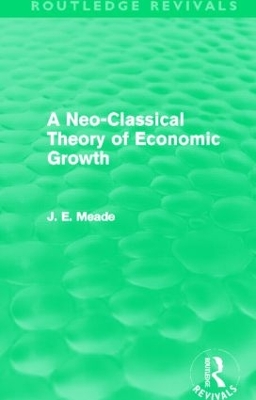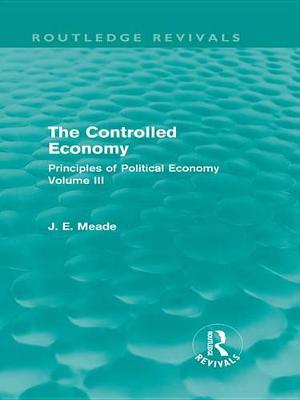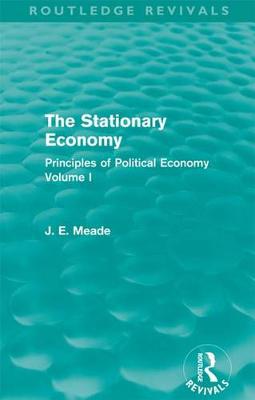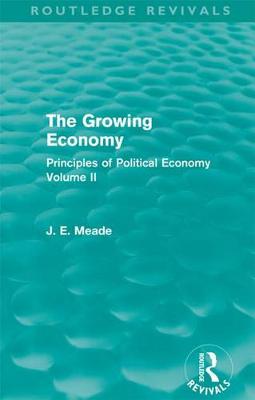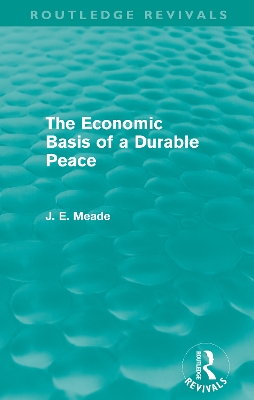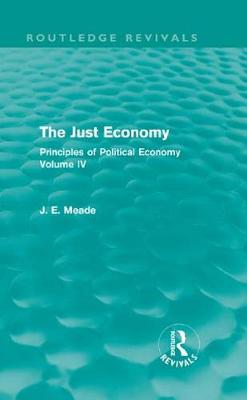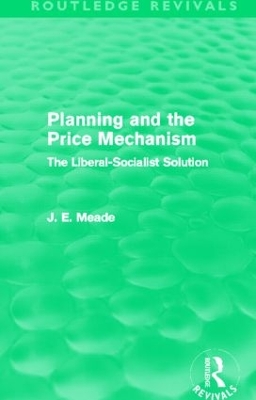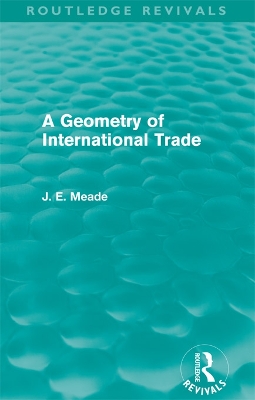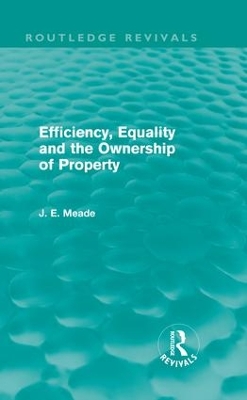Collected Works of James Meade
10 total works
A Neo-Classical Theory of Economic Growth (Routledge Revivals)
by James E. Meade
First published in 1960, this seminal work illuminates the interrelations of the various approaches to the theory of economic growth. Professor Meade seeks to understand the factors which determine the speed of economic growth and outlines the ways in which classical economic analysis may be developed for application to the problem of economic growth.
First published in 1971 this volume applies the tools of static and of dynamic analysis (outlined in The Stationary Economy and The Growing Economy) to the control of a dynamic economy. This involves a discussion of subjects such as the theory of indicative planning, and the planning by the government of its monetary, fiscal, and incomes policies for the purposes of the short-run stabilization of the economy and of ensuring the best long-run use of the community’s resources. Special emphasis is laid on the planning of such policies in conditions in which many future events remain inevitably uncertain.
This book considers these issues in relation to a competitive, free-enterprise economy; and little or no reference is made to problems of monopoly or of distinctions between social and private costs and benefits, due to indivisibilities and externalities in economic life.
First published in 1965, this is a reissue of the first volume in Professor Meade’s highly influential Principles of Political Economy, which aimed to provide an overview of economic analysis in light of contemporary developments in the subject. This volume is based on models of economic systems in which conditions are such as to make possible a state of perfect competition, in which there are no capital goods, in which consumers’ tastes, technical knowledge, and the size and composition of the goods are static.
First published in 1968, this is the second part of Professor Meade’s Principles of Political Economy, which presents a systematic treatment of the whole field of economic analysis in the form of a series of simplified models which are specifically designed to show the interconnections between the various specialist fields of economic theory.
In this volume, Professor Meade is concerned with the theory of economic growth and the rates at which various economic quantities are growing. In order to do this, he introduces capital goods into the system and allows for growth through capital accumulation, population expansion and technical progress. His analysis is divided into two models: a one product model and a many-product model.
The Economic Basis of a Durable Peace (Routledge Revivals)
by James E. Meade
First published in 1940, this book suggested the basic principles upon which a new international economic order should be built at the end of the Second World War. Particular attention is paid to the possibility of constructing such an international order on the basis of divergent national economic systems – whether liberal or planned, capitalist or socialist. In undertaking this task the author combines theoretical analysis with a description of the immediate pre-war economic situation and writes in a language which is equally accessible to the economist and the layman.
First published in 1979, this fourth part of Principles of Political Economy applies the tools of economic analysis to the distribution of income and property. Professor Meade considers the problems of making interpersonal comparisons of welfare and of distinguishing between the efficiency and distributional aspects of changes in social welfare. He analyses the possible criteria for redistribution as between rich and poor members of the same generation, as between present and future generations, and – in the context of demographic policies – as between the born and the unborn. Special attention is given to the social factors (such as assortative mating, differential fertility, and laws and customs relating to the inheritance of property) in explaining the persistence of economic inequalities, and to the various forms of economic policy which may be devised for the reduction of such inequalities. An extensive mathematical model of the dynamics of social welfare in a second-best economy is appended.
First published in 1948, this book outlines a solution to contemporary economic problems in the post-war years. This solution aims to make the best use of our price mechanism, free initiative and competition, but also involves the socialization of certain monopolistic concerns and the state control of the price mechanism in such a way as to maintain full employment, to achieve an equitable distribution of income and property, and to restore equilibrium to our balance of payments. It is an outline of that middle way which the author calls the Liberal-Socialist solution.
The Intelligent Radical's Guide to Economic Policy (Routledge Revivals)
by James E. Meade
First published in 1975, this guide to economic policy outlines an economic philosophy for reform for the ‘intelligent radical’ who seeks to address the issues of liberty and equality within society. Among other issues, the book looks at policies to control inflation, to maintain full employment, to set prices and wages, to distribute income and property, and to manage the environment and international trade.
Professor Meade expounds in simple language a set of closely interrelated policies designed to enable us to achieve what he describes as ‘ the decent, free, prosperous society which modern science has undoubtedly brought within our grasp.
First published in 1952, this work is a systematic exposition of Professor Meade’s geometric method, bringing together into a single coherent account the modern geometrical analysis of the theory of international trade. The work makes a number of original contributions, notably in the geometrical treatment of domestic production, of the balance of payments, and of import and export duties.
Efficiency, Equality and the Ownership of Property (Routledge Revivals)
by James E. Meade
First published in 1964, this is a study of the extreme inequalities in the ownership of property, in economies across the globe. Professor Meade examines in depth the economic, demographic and social factors which lead to such inequalities. He considers a wide range of remedial policies – educational development, reformed death duties and capital taxes, demographic policies, trade union action, the socialization of property, the development of a property-owning democracy, the expansion of the welfare state.
The argument is expressed in precise analytical terms, but the main exposition is free of mathematics and technical jargon and is designed for the interested layman as well as the economist.
